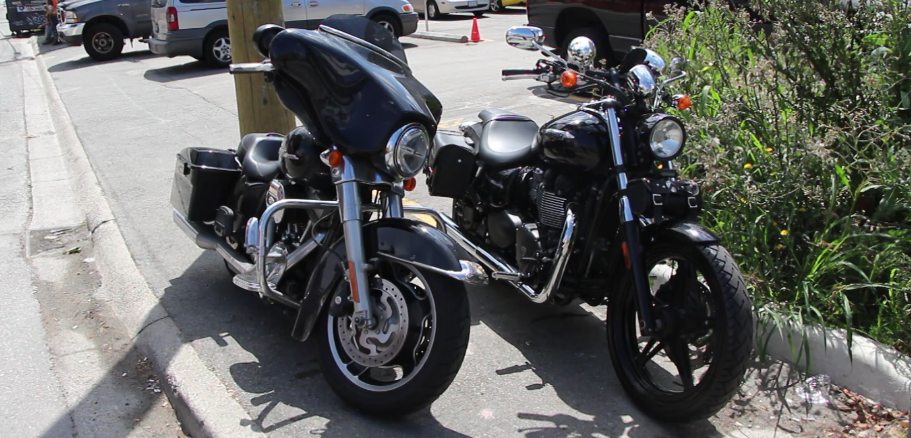TORONTO – The City of Toronto is studying the possibility of allowing motorcyclists to move between lanes of traffic while at a red light, a practice that advocates say would increase safety for those on bikes.

The practice known as lane filtering is being analyzed after city council approved a motion last month to explore a potential pilot project. The practice is different from lane splitting – where motorcyclists drive between lanes while traffic is moving.
Michel Mersereau, a senior instructor with The Rider Training Institute helped draft the lane filtering proposal, said it will make roads safer for motorcyclists.
“Lane filtering, basically what we are looking at is a pilot project around Richmond and Adelaide streets which represents the highest motorcycle collision zone in the city and this would allow motorcyclists at a red light to filter up between a row of stopped cars to the stop line and proceed through the intersection once the light turns green,” he said.
“It comes down to safety … What evidence suggests, in jurisdictions where it is allowed, it removed motorcyclists from the potential from a rear or front facing collision which data shows has the potential to be the most catastrophic collision a rider can be involved in. it reduces head injuries, torso injuries and even fatalities by a significant margin.”
Currently, neither lane filtering or lane splitting are allowed in Toronto and the city is not considering allowing the latter, said Coun. Anthony Perruzza, who brought forward the motion.
Perruzza, a motorcyclist himself, said he believes lane filtering would make motorcyclists safer.

Get daily National news
“They’re in a much safer place because they’re ahead of the cars and they’re not just sitting in a lane looking behind them to see someone in a vehicle looking at their phone or being distracted,” he said.
“It’s my hope that city council will turn its mind to motorcycle safety.”
The Canadian Motorcycle Association, which plans on coming to a formal stance on lane filtering after a board meeting in the fall, said the practice can help ease traffic congestion in addition to keeping motorcyclists safe.
Spokeswoman Marilynn Bastedo noted, however, that implementing lane filtering would require efforts to educate car drivers about the practice.
“All of a sudden this motorcyclist appears next to you and the car beside you, so it’s not something you can just implement overnight,” she said. “But somebody has got to (implement lane filtering) … If you’re interested and bold enough to do it, then go for it.”
The Canadian Automobile Association said it was researching lane filtering after learning of Toronto’s studying of the practice.
“I know that (lane filtering) is quite popular in Europe and other areas overseas so it’s not surprising that some of those initiatives would migrate over to North America and also here in Toronto,” said spokesman Raymond Chan.
LISTEN: Toronto Coun. Anthony Perruzza pitches lane-splitting pilot for Richmond, Adelaide
The issue of lane filtering has also come up in British Columbia.
In May, the British Columbia Coalition of Motorcyclists sent a proposal to the province’s transportation ministry requesting that lane filtering be legalized throughout the province.
The organization’s spokeswoman, Tara Briscoe said they haven’t heard back yet, but the coalition is hopeful that if Toronto’s pilot project gets approved, a similar project could be created in B.C.
Perruzza said he expects the Toronto report on lane filtering to be brought to city council early next year.
—With files from Erica Vella
- Waterloo region cites water capacity issues amid population boom, aging infrastructure
- Shelter-in-place lifted after suspect, officer exchange fire in Welland, Ont., SIU probing
- Man found guilty of murder in shooting that killed woman near Toronto consumption site
- Hart to start for Golden Knights against Oilers







Comments